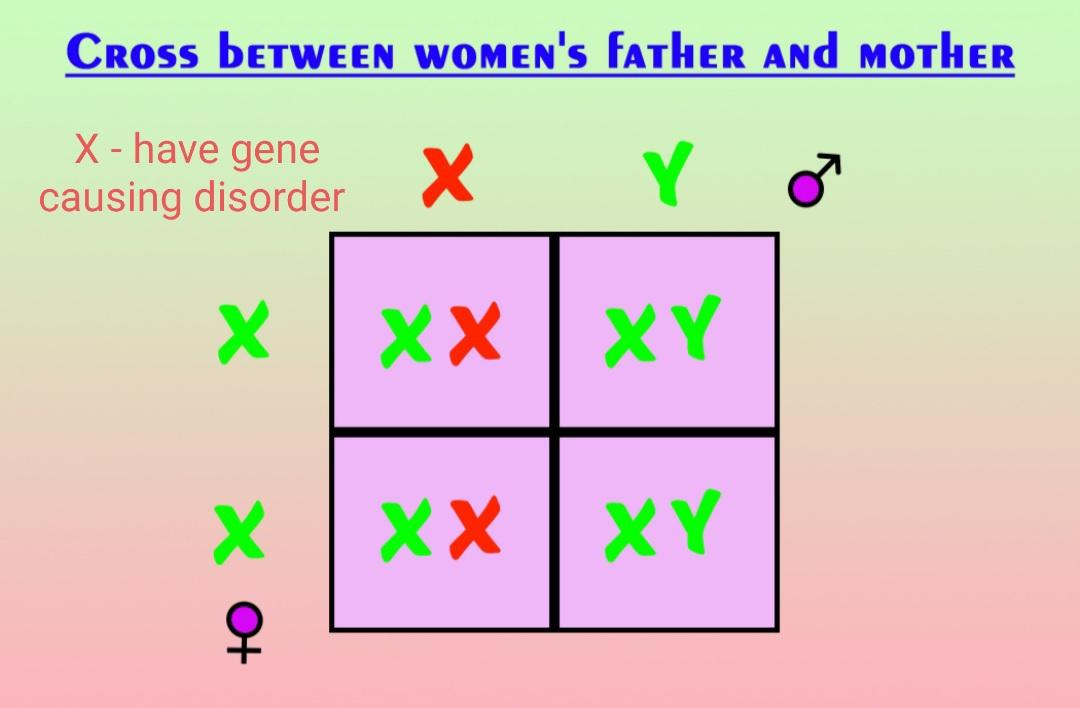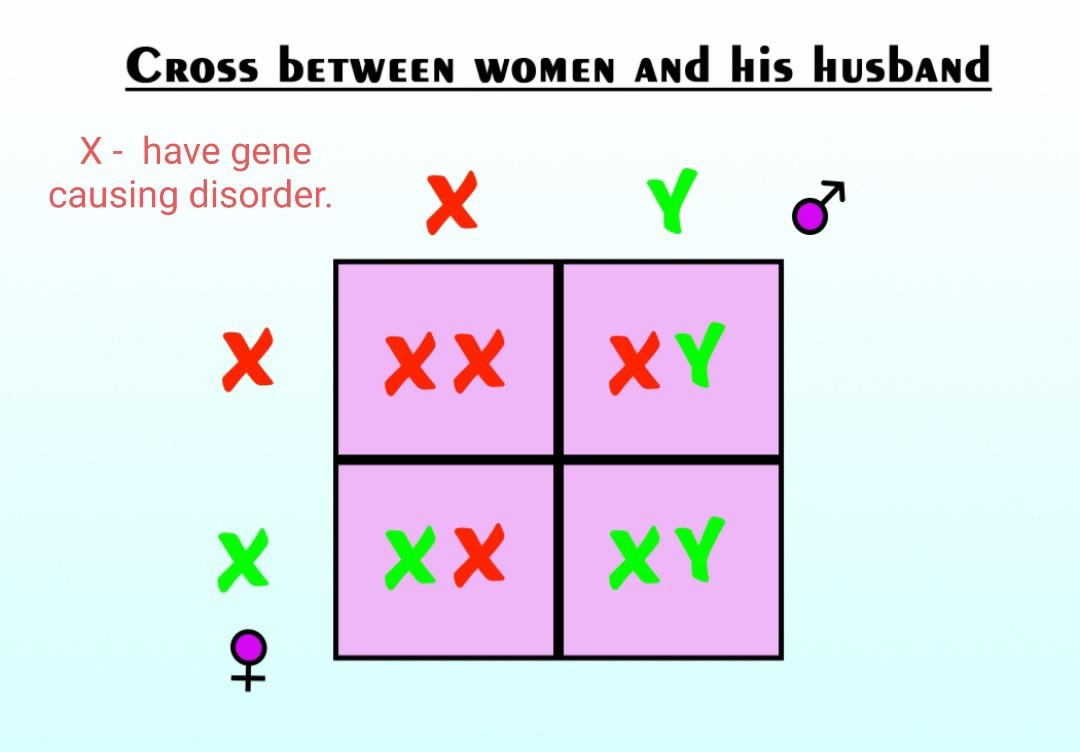
Pattern baldness is a sex-linked recessive trait. If a woman whose father is bald and a man
who is bald has a son and the woman’s mother does not carry the allele for pattern baldness. The
The probability that the son will inherit the allele for pattern baldness is
(A) $0\%$
(B) $25\%$
(C) $50\%$
(D) $75\%$
(E) $100\%$
Answer
557.1k+ views
Hint: Pattern baldness is a sex-linked recessive trait. X-linked inheritance means that the gene which is causing the disorder or the trait is found on the X chromosome. The males just have one X and one Y chromosome and the Females have two X chromosomes.
Complete answer:
A female will always inherit only one X chromosome from her father. Because the woman’s mother only carries one copy of the allele and doesn’t carry the allele for pattern baldness. If the couple has a son, there’s a $50\%$ chance that the son will inherit the X-linked allele for pattern baldness from his mother.
Additional Information: In humans, the inheritance of X-linked recessive traits follows a novel pattern made from three points.


The primary is that affected fathers cannot pass x-linked recessive traits to
their sons , this is because of the reason that fathers give Y chromosomes to their sons. This suggests that males suffering from an x-linked recessive disorder inherited the responsible X chromosome from their mothers. The second is that the x-linked recessive traits are more commonly expressed in males than females. This is often because of the fact that males possess only a single X chromosome, and thus require just one mutated X to be affected. Women possess two X chromosomes and thus must receive two of the mutated recessive X chromosomes only, which is possible when one X chromosomes are received from each parent. So, baldness is hair loss that affects the top and front of the scalp.
So the correct answer is ‘$50\%$’.
Note: In male-pattern hair loss (MPHL), it was seen that the hair loss often presents itself as either a receding hairline, loss of hair on the crown of the scalp, or a mixture of both, on the other hand in female-pattern hair loss , which typically presents as a thinning of the hair.
Complete answer:
A female will always inherit only one X chromosome from her father. Because the woman’s mother only carries one copy of the allele and doesn’t carry the allele for pattern baldness. If the couple has a son, there’s a $50\%$ chance that the son will inherit the X-linked allele for pattern baldness from his mother.
Additional Information: In humans, the inheritance of X-linked recessive traits follows a novel pattern made from three points.


The primary is that affected fathers cannot pass x-linked recessive traits to
their sons , this is because of the reason that fathers give Y chromosomes to their sons. This suggests that males suffering from an x-linked recessive disorder inherited the responsible X chromosome from their mothers. The second is that the x-linked recessive traits are more commonly expressed in males than females. This is often because of the fact that males possess only a single X chromosome, and thus require just one mutated X to be affected. Women possess two X chromosomes and thus must receive two of the mutated recessive X chromosomes only, which is possible when one X chromosomes are received from each parent. So, baldness is hair loss that affects the top and front of the scalp.
So the correct answer is ‘$50\%$’.
Note: In male-pattern hair loss (MPHL), it was seen that the hair loss often presents itself as either a receding hairline, loss of hair on the crown of the scalp, or a mixture of both, on the other hand in female-pattern hair loss , which typically presents as a thinning of the hair.
Recently Updated Pages
The number of solutions in x in 02pi for which sqrt class 12 maths CBSE

Write any two methods of preparation of phenol Give class 12 chemistry CBSE

Differentiate between action potential and resting class 12 biology CBSE

Two plane mirrors arranged at right angles to each class 12 physics CBSE

Which of the following molecules is are chiral A I class 12 chemistry CBSE

Name different types of neurons and give one function class 12 biology CBSE

Trending doubts
One Metric ton is equal to kg A 10000 B 1000 C 100 class 11 physics CBSE

What is 1s 2s 2p 3s 3p class 11 chemistry CBSE

Discuss the various forms of bacteria class 11 biology CBSE

State the laws of reflection of light

Explain zero factorial class 11 maths CBSE

An example of chemosynthetic bacteria is A E coli B class 11 biology CBSE




